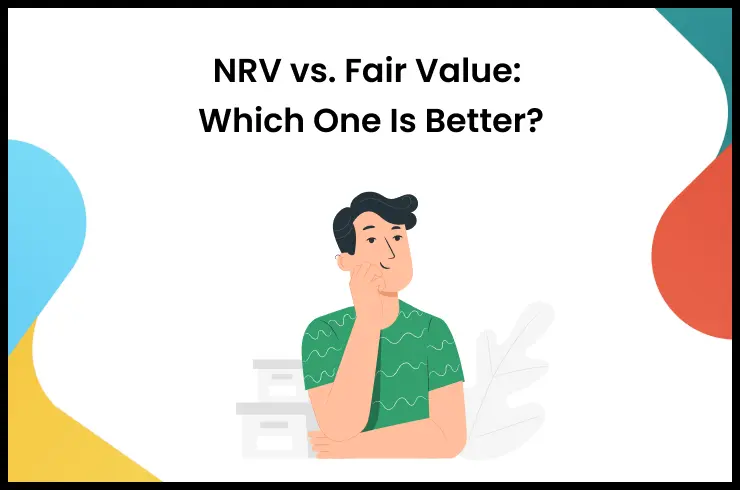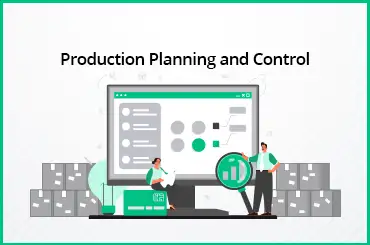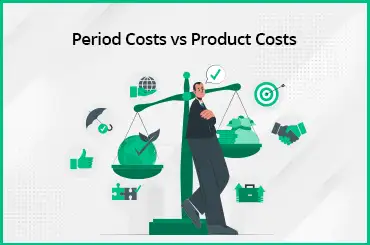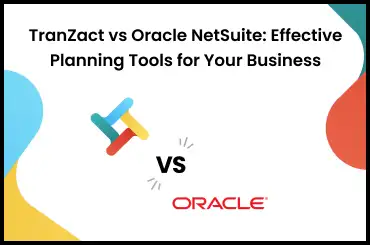Aggregate production planning is a strategic planning process that helps businesses to know about their overall production and resource requirements for a certain time span. Optimum utilization of resources is the objective of every manufacturer. For this, they first analyze and forecast demand for their goods and then focus on the best ways to fulfill it using the resources at hand most cost-effectively.
This article talks about aggregate planning, its objective, approaches, factors affecting aggregate planning, aggregate planning benefits, aggregate planning best practices, and more. Read ahead to learn more about this strategic approach.
What Is Aggregate Planning?
Aggregate planning is a strategic action plan for about three months to a year or more where a schedule is developed regarding production and operations. The focus is on resource allocation and the objective is to streamline the processes and reduce production costs. Another goal of aggregate planning is to make the production capacity effective enough to meet demand.
A manufacturing plan is prepared months in advance after analyzing factors such as inventory capacity, availability of workforce, and cost of production among others. It aims to ensure that production is as per the demand forecast and remains uninterrupted.
Aggregate planning provides a strategic roadmap that is completely inclined with business goals or objectives. This process is commonly used in manufacturing, retail, and service industries to ensure that the right products or services are available at the right time, in the right quantities, and at the right cost. It is highly beneficial to improve production efficiency, improve customer satisfaction, and ensure long-term success.
Aggregate Planning Objectives
The main goal of aggregate planning is to balance the production capacity of a business with the demand for its products or services over a specific planning horizon. It seeks to determine the optimal production level that meets customer demand while minimizing production and inventory costs, maximizing efficiency, and maintaining a stable workforce.
During the production period, many problems can arise. However, using this comprehensive production plan, businesses can easily identify and rectify those problems. It is possible because production planning takes market trends, production capacity, demand forecasts, inventory levels, and labor availability into account.
With this information, it becomes easy for businesses to make informed choices when it comes to production levels, staffing, and inventory management to optimize their resources and meet both customer satisfaction goals and financial goals.
Aggregate Planning Approaches
Aggregate production planning (APP) is the process of ideating and developing a production plan that balances supply and demand patterns over a certain time horizon, typically ranging from a few months to a year.
There are different approaches to aggregate planning, and businesses can choose the most suitable approach depending on their vision, constraints, and resources.
Aggregate planning can be done by following various approaches as listed below:
- The Level Strategy approach aims at a consistent production rate.
- Chase's Strategy approach aims at matching production speed with demand.
- The Hybrid approach is a combination of level and chase strategy where production is done consistently as per demand.
- The Outsourcing approach means outsourcing production to another manufacturer.
- The Backorder approach means accepting orders but completing them later involving a longer lead time.
These approaches are explained in detail, later in this blog.
Factors Affecting Aggregate Planning
Aggregate planning in operations management is an essential process for companies that need to plan their production operations to meet demand while minimizing costs and maximizing efficiency. It needs to be done carefully considering the below-listed factors:
- A comprehensive demand forecasting for 3 to 18 months periods.
- Production costs including the cost of raw materials, workers, and inventory planning.
- Production capacity i.e. machine and other resources available for production.
- The current level of inventory.
- The number and capability of the workforce.
- Lead time i.e. the time for the production of goods and meeting orders.
- The production efficiency of the organization based on technology and processes.
- Government regulations also affect the status of aggregate planning.
Aggregate Planning Benefits
Here are some points to understand the advantages of aggregate planning:
Balancing supply and demand: Creating a balance between demand and supply is one of the main mottos of APP. It ensures that there is no overproduction or underproduction.
Resource allocation: APP plays an important role in allocating resources as effectively as possible. It integrates labor, equipment, and material requirement parameters to improve efficiency and reduce waste.
Cost control: When demand and production are aligned together, it highly reduces the cost by helping production houses buy only the required materials.
Improving customer service: When the production matches the demand, it helps in maintaining a healthy customer-seller relationship.
Strategic planning: APP helps in the future planning of production businesses. Analyzing all the key factors involved, APP methodologies help businesses to make informed and calculative decisions.
How to Create an Aggregate Plan
Creating a good aggregate plan requires a systematic approach. Here are some key steps to follow when creating an effective APP:
- Develop a demand forecast: Gather data on historical sales trends, market conditions, and customer demand to develop a reliable forecast for planning. This forecast helps to gauge the inventory and production requirements.
- Analyze production capacity: For high-level aggregate production planning, consider factors, such as technology, equipment, staffing, production capacity, and capabilities.
- Make the production plan: One must also determine the production plan by using factors, such as demand forecast. Comprehensive planning helps in balancing demand and production. Considering some other production strategies such as level, chase, or mixed production will also help in fitting the best requirements and goals for the business.
- Optimize inventory levels: While conducting the aggregate production planning process, it is required to determine the proper inventory level so that it can match demand and production objectives. This optimization helps to reduce inventory carrying costs while ensuring that sufficient inventory is available to meet customer demand.
- Monitor and adjust the plan: Regularly monitor actual production and demand data to ensure that the plan is on track. Adjust the plan as necessary based on changes in demand or production capacity.
Types of Aggregate Planning Strategies
Here are some effective aggregate production planning methods or strategies that businesses can use based on the importance of aggregate planning for their business.
Here are some effective aggregate production planning methods or strategies that businesses can use based on the importance of aggregate planning for their business.
Level production strategy helps to keep the workforce and inventory levels constant, which reduces the costs associated with hiring and training new employees and managing excess inventory.
Chase production strategy: This strategy involves adjusting the production levels to match the demand for products. The company ramps up production during peak periods and slows down during slow periods. Chase's production strategy helps to minimize inventory costs, but it requires a flexible workforce and efficient production scheduling.
Mixed production strategy: This strategy combines the level and chase production strategies, depending on the demand for products. The company maintains a base level of production to meet the minimum demand, and then ramps up or slows down production as needed. A mixed production strategy offers the benefits of both level and chase production strategies, but it requires a more complex production planning process.
Subcontracting strategy: This strategy involves outsourcing some of the production tasks to other companies or suppliers. Subcontracting strategy helps to reduce production costs and increase flexibility, but it requires careful selection of suppliers and effective management of the outsourcing process.
Aggregate Planning Best Practices
Following best practices will help you make an effective plan.
- Always take inputs from all the key departmental heads to ensure all aspects are taken care of at the planning stage itself.
- To have an effective plan, you must consider past data, market, and demand trends, and other business assumptions and variables to plan better.
- Do ascertain accurate demand and production capacity to know the real picture. Analyze capacity constraints and always have a Plan B just in case your Plan A fails for some reason.
- List and understand all the company policies and regulations related to how much production can be done, and what compliances need to be adhered to.
- Before making a plan have a clear idea of the costs involved i.e. fixed and variable costs and direct and indirect labor costs.
- Review the aggregate plan from time to time and make changes as per sales, production, and inventory levels.
Enhance Production Efficiency With Precise Aggregate Planning
Effective aggregate planning is essential for ensuring the long-term success of a business. By carefully considering these strategies and selecting the one that best fits their production needs, businesses can optimize their production processes, minimize costs, and meet the demands of their customers.
TranZact offers a dedicated production module that assists SMEs with real-time information on orders and inventory movements so that they can plan their production to suit demand and save costs!
FAQs on Aggegrate Planning
1. What are the steps in the aggregate planning process?
The steps in the aggregate planning process include determining demand forecasts, evaluating the plans, selecting the best plan, developing alternative plans, and implementing the plan.
2. What is an example of aggregate planning?
An aggregate production planning example is when a company manufactures smartphones. The company needs to plan its production and workforce levels to meet the expected demand for its smartphones over the next year. In this way, it creates a strategy to meet future demand by adjusting production levels, labor, and inventory.
3. What are the types of aggregate planning?
Types of aggregate production planning include level strategy, chase strategy, hybrid strategy, backorder strategy, and inventory strategy.
4. What are the 5 costs in aggregate planning?
The five costs in aggregate planning include regular time cost, overtime cost, subcontracting cost, inventory holding cost, and back-ordering or stockout cost.















